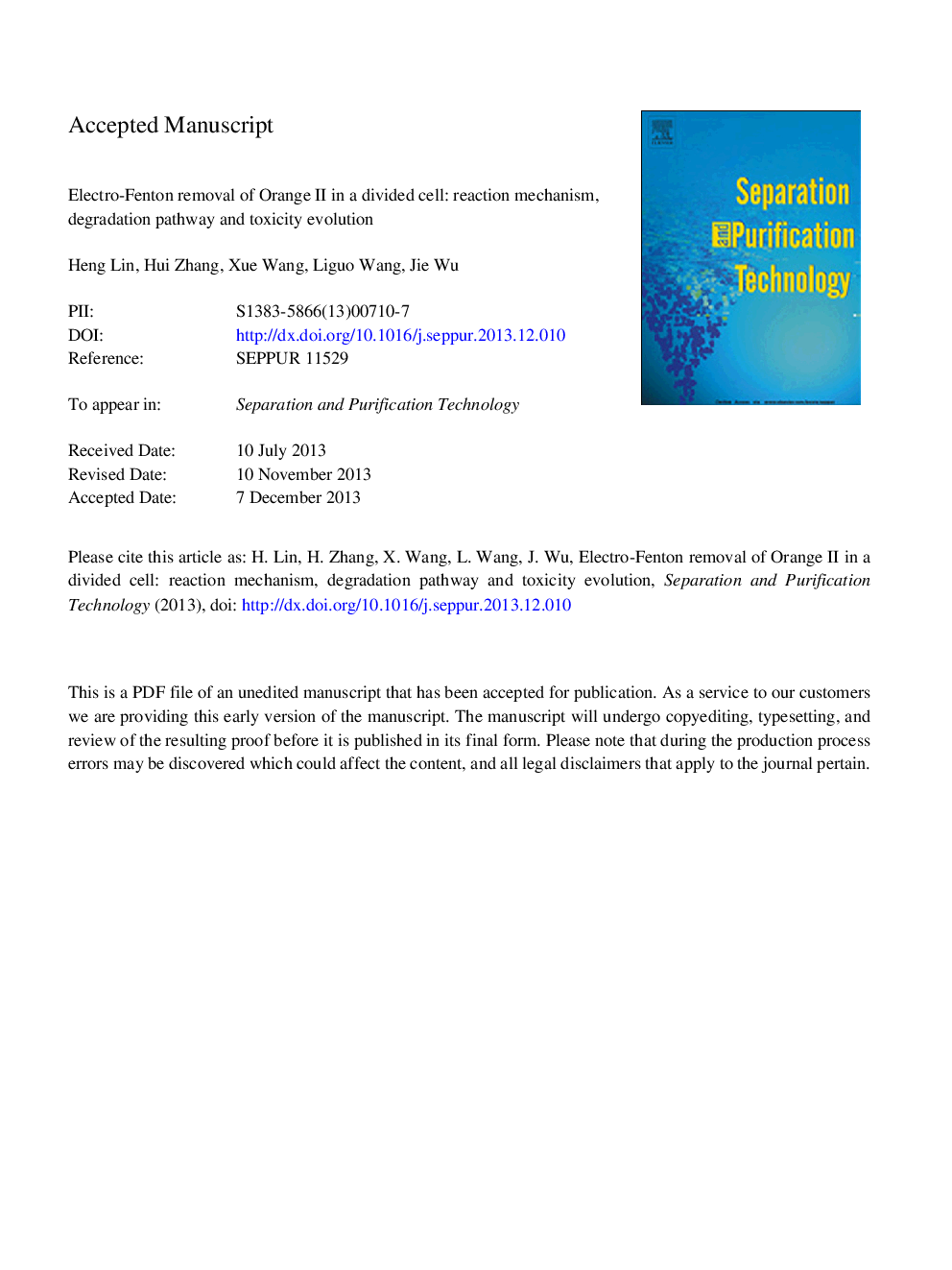| Article ID | Journal | Published Year | Pages | File Type |
|---|---|---|---|---|
| 7044451 | Separation and Purification Technology | 2014 | 34 Pages |
Abstract
Orange II was degraded in a divided electrolytic cell in which a salt bridge was used to connect the anode and cathode. Hydrogen peroxide and ferrous ion are electrogenerated at the carbon-felt (CF) cathode. Cathode reduction contributes to the decolorization in cathodic compartment. The decay of COD and TOC was attributed to hydroxyl radicals produced by Fenton's reaction in cathodic compartment. Anodic oxidation of Orange II was much less pronounced than cathodic Fenton's reaction. The effects of some important reaction parameters in cathodic compartment indicated that the optimal conditions for Orange II degradation were current density 1.78Â mA/cm2, initial pH 3.0 and Fe3+ concentration 0.2Â mM. The intermediate products were determined by GC-MS analysis and the plausible degradation pathway in cathodic compartment was proposed. Toxicity test with Daphnia magna showed that the acute toxicity of the solution increased during the first stage of the reaction, and then gradually declined with the progress of cathodic Fenton's reaction.
Related Topics
Physical Sciences and Engineering
Chemical Engineering
Filtration and Separation
Authors
Heng Lin, Hui Zhang, Xue Wang, Liguo Wang, Jie Wu,
